Hi, I’m YOKO who lives in Melbourne, Australia. Those adorable Japanese design zip pouches come with KAMON-patterns (Japanese family crests). They are believed to bring good fortune to the owners.
こんにちは〜♪メルボルンで虹織り(虹色の手織り)やソーイングをしてる陽子です♪
今回は、『幸運をもたらす』と言われている、縁起の良い日本の家紋柄の小物ポーチを作りましたー♪
Gallery of Japanese design zip pouches/家紋柄のファスナー付き小物ポーチ大集合♪
Following is each zip pouch photo and the meaning of the motif.
ここから下は、それぞれの小物ポーチの写真と家紋の意味です♪
①Carp(DARK RED)/鯉文(こいもん)濃い赤色
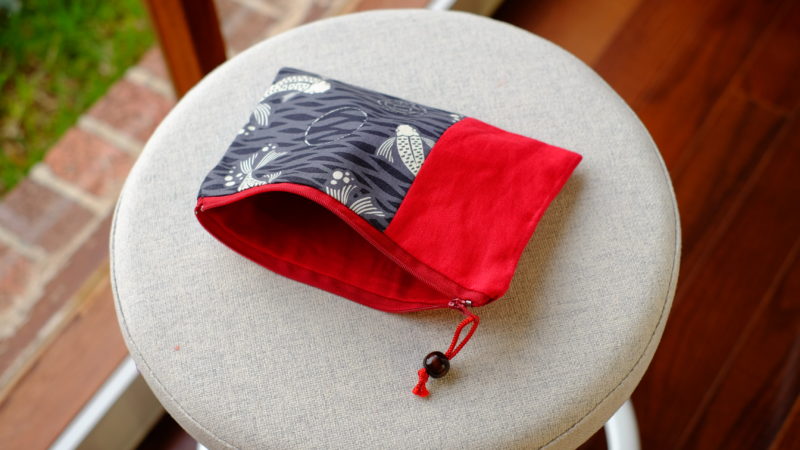
Meaning of this motif/この家紋の意味
The belief that a carp that scales the Dragon Gate repairs on the Yellow River will turn into a dragon has made this fish a symbol of upward mobility and worldly success.
[Quote from] 日本の文様:Traditional Japanese Patterns and Motifs
鯉は古くから川魚の長として、また黄河の急流にある龍門という瀧を登る鯉は龍になるという由来から、立身出世のシンボルとされた。
②Vintage Japanese signages(RED)/昭和モダン(赤色)
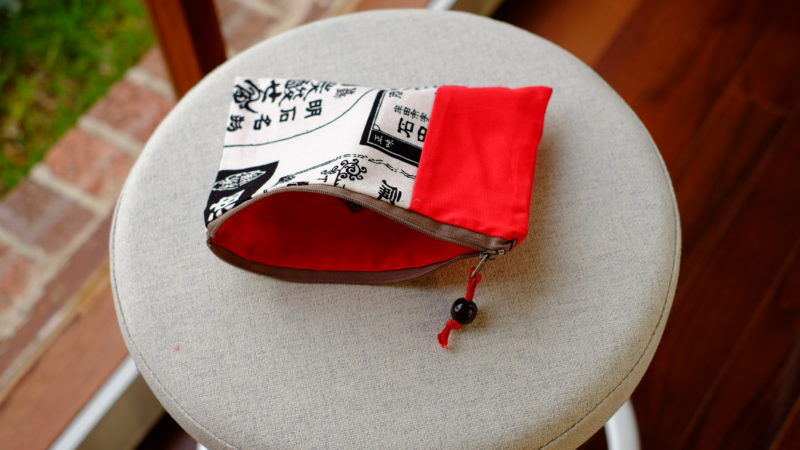
Meaning of this motif/この家紋の意味
Vintage signages for ancient Japanese shops (e.g., Soy source shop, Miso (fermented soybean paste) shop, Seaweed shop, etc).
昭和初期(もっと古いかも?)と思われる、醤油・味噌・昆布などのお店の看板のデザイン。
③Samurai family crests(DARK ORANGE)/武将の家紋(濃いオレンジ色)
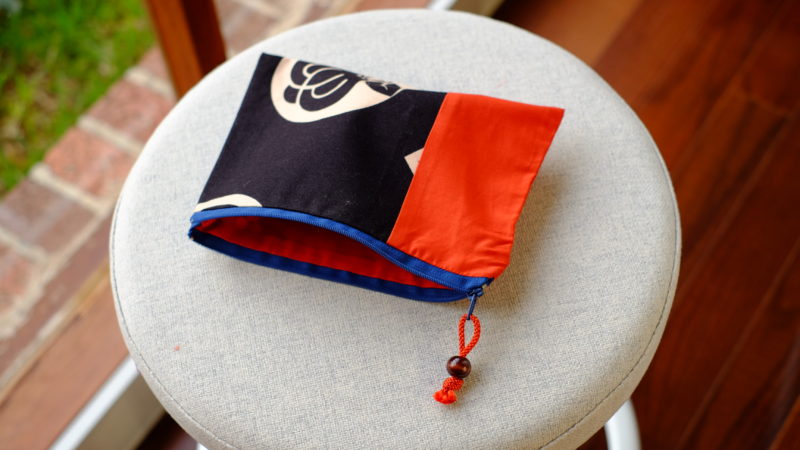
Meaning of this motif/この家紋の意味
This fabric contains several family crests of famous Japanese warriors Samurai (e.g, Hollyhock for Ieyasu Tokugawa family) / 織田信長、豊臣秀吉、徳川家康の葵文など、いくつかの戦国武将の家紋柄が描かれた布地です。
Hollyhock with two-lobed leaves on long stems are known as futaba aoi, sometimes simplified into a heart-shaped motif. A combination of three such hollyhock leaves became the crest of the Tokugawa clan.
[Quote from] 日本の文様:Traditional Japanese Patterns and Motifs
葵は山野に自生するウマノスズクサ科に属する多年生草本で、茎は地表を這ってひげ根を出し、そこから茎が伸びて長い柄の二枚葉が出るのが特徴で、これを二葉(ふたば)葵と呼ぶ。葵文は、この二葉葵の葉を三枚合わせて図案化した「三つ葉葵」は徳川家の紋章として有名だが、もともとは京都の「賀茂神社」の神紋であった。毎年5月15日に行われる賀茂神社の例祭「葵祭」に公家や神人が、葵の若葉を髪にさしたところから神紋となり、また同社に奉仕する家の紋章となった。江戸時代には徳川一族以外は葵文および葵の文様を使用することが厳禁され、徳川一門の独占文に定着していった。
④Hemp leaf and Cherry blossom(ORANGE)/麻の葉と桜の花(オレンジ色)
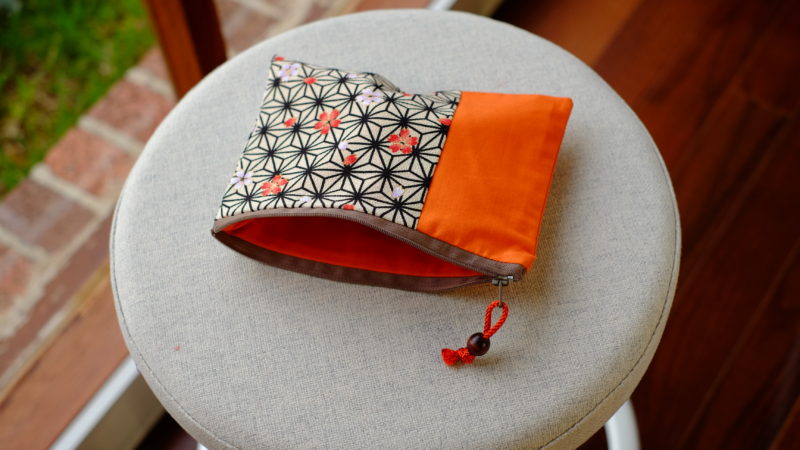
Meaning of this motif (Hemp leaf) / この家紋の意味 (麻の葉文)
A hexagonal pattern based on the hemp leaf, repeated as hexagonal stars. Composed of horizontal, vertical, and diagonal lines, the hemp leaf stars can be linked together in allover patterns.
[Quote from] 日本の文様:Traditional Japanese Patterns and Motifs
六角形を基本として、水平・垂直・斜線によって構成され、幾何学的に連続させた文様。そのかたちが麻の葉にのているところから、この名が生まれたと伝えられる。[…] また麻は真っ直ぐに伸びるところから、子供の産着や下着に用いられた。
Meaning of this motif (Cherry blossom) / この家紋の意味 (桜文)
In times past, the visor of the cherry blossom was used to forecast the rice harvest. Heian-period cherry blossom parties were held in the imperial palace precincts and other elite locations. Celebrated in poem, prose, and painting, the cherry blossom replaced the plum as the synonym for “flower”.
[Quote from] 日本の文様:Traditional Japanese Patterns and Motifs
桜は古くから愛好され、その花の咲く様子を見て、その年の穀物の実りを占った。平安時代には宮廷の桜花の宴、後醍寺などの桜会(さくらえ)、また紫辰殿(ししんでん)前庭にある左近の桜をめでる宴があり盛行した。桜は歌や物語、倭絵(やまとえ)に取り上げられ、花といえば梅に代わって桜のこととして定着していった。政治の実権が公家から武家に移った鎌倉時代には、武具の意匠に愛用され、小桜の花を染めた染革で小桜縅(おどし)の鎧や兜がつくられ、室町時代には蒔絵(まきえ)や刀の鍔(つば)などにも桜の文様が用いられた。
⑤Vintage Japanese signages(YELLOW)/昭和モダン(黄色)
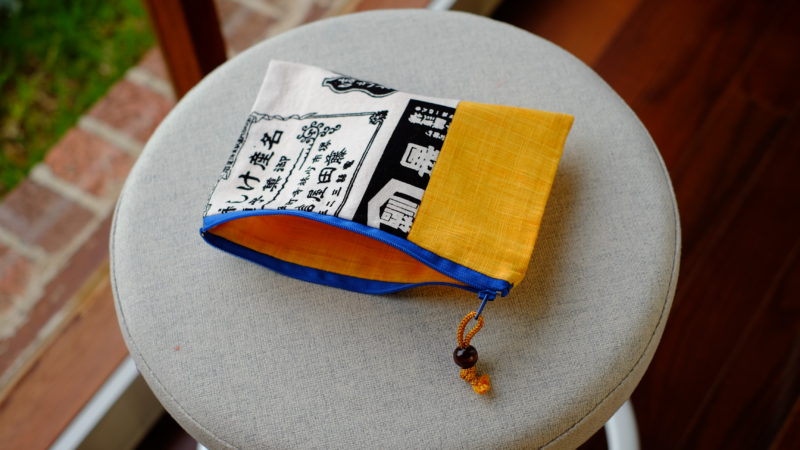
Meaning of this motif/この家紋の意味
Vintage signages for ancient Japanese shops (e.g., Soy source shop, Miso (fermented soybean paste) shop, Seaweed shop, etc).
昭和初期(もっと古いかも?)と思われる、醤油・味噌・昆布などのお店の看板のデザイン。
⑥A sword-shaped creeping woodsorrel leaf on a circle(YELLOW)/剣かたばみ(黄色)

Meaning of this motif/この家紋の意味
The complex leaves of the wood sorrel each consist of three leaflets on a long stem. The lovely, balanced curves of these trefoil leaves made them ideal for turning into stylised design motifs.
[Quote from] 日本の文様:Traditional Japanese Patterns and Motifs
カタバミ科の多年草で、各地の庭や道端などに生える。茎は地をはい、多数の小枝を出す。葉は長柄をもち三枚の小葉からなる複葉である。均整のとれた葉の曲線は美しく、文様化されて紋章となり、旗指物の類につけたり、衣類の文様にされた。家紋には花や実をつけたもの、さらに引両、千鳥、生竹などと組み合わせたものもある。
⑦Carp(YELLOW)/鯉文(こいもん)黄色
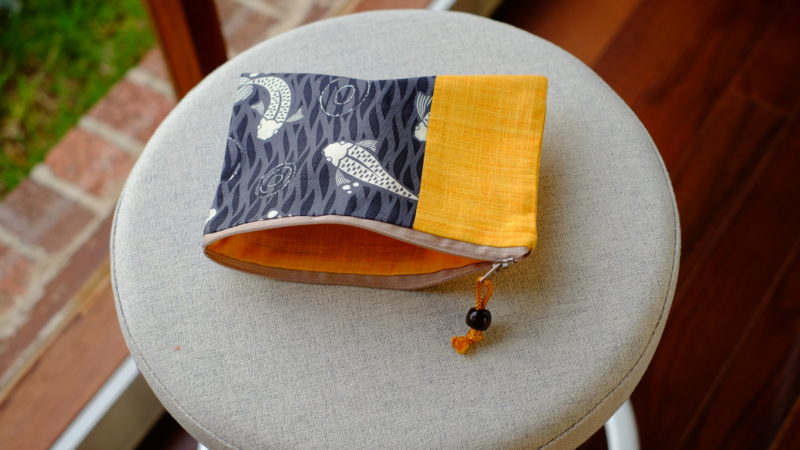
Meaning of this motif/この家紋の意味
The belief that a carp that scales the Dragon Gate repairs on the Yellow River will turn into a dragon has made this fish a symbol of upward mobility and worldly success.
[Quote from] 日本の文様:Traditional Japanese Patterns and Motifs
鯉は古くから川魚の長として、また黄河の急流にある龍門という瀧を登る鯉は龍になるという由来から、立身出世のシンボルとされた。
⑧Arrow feathers(BLUE)/矢絣(やがすり)青色
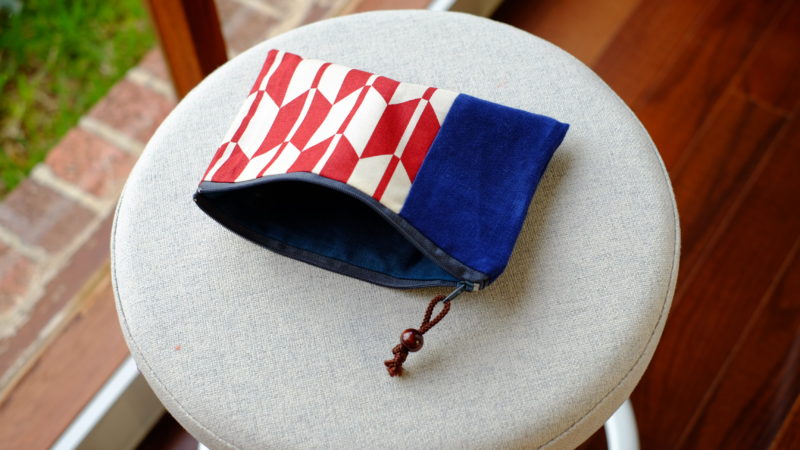
Meaning of this motif/この家紋の意味
⑨A sword-shaped creeping woodsorrel leaf on a circle(TEAL)/丸に剣かたばみ(緑青色)
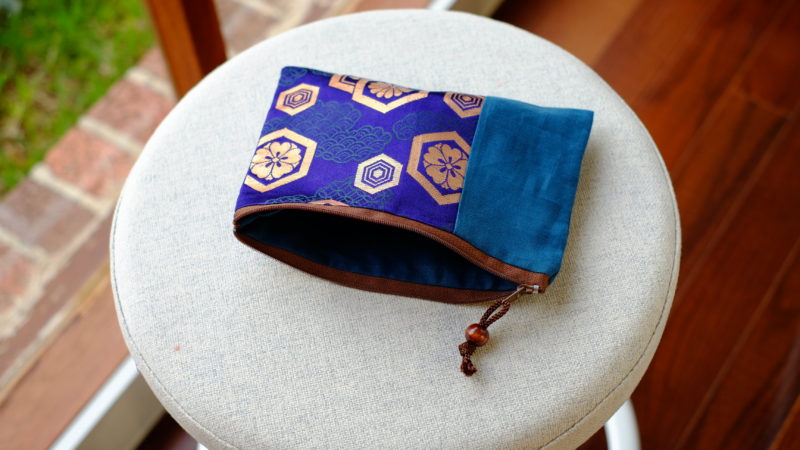
Meaning of this motif/この家紋の意味
The complex leaves of the wood sorrel each consist of three leaflets on a long stem. The lovely, balanced curves of these trefoil leaves made them ideal for turning into stylised design motifs.
[Quote from] 日本の文様:Traditional Japanese Patterns and Motifs
カタバミ科の多年草で、各地の庭や道端などに生える。茎は地をはい、多数の小枝を出す。葉は長柄をもち三枚の小葉からなる複葉である。均整のとれた葉の曲線は美しく、文様化されて紋章となり、旗指物の類につけたり、衣類の文様にされた。家紋には花や実をつけたもの、さらに引両、千鳥、生竹などと組み合わせたものもある。
⑩Samurai family crests(VIOLET)/武将の家紋(赤紫色)
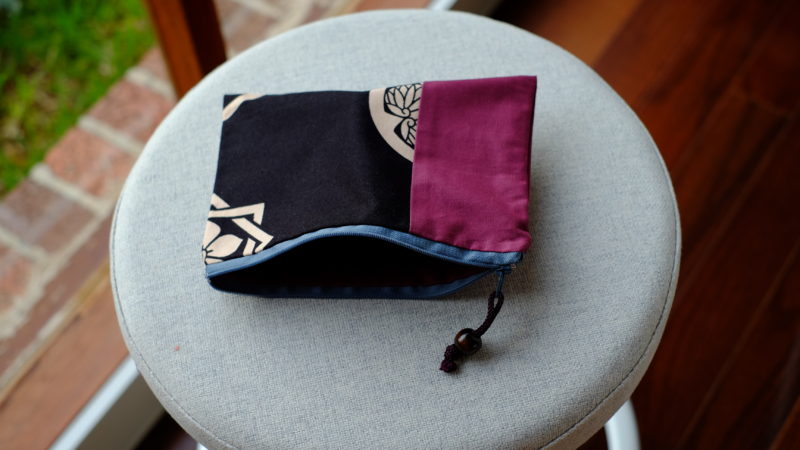
Meaning of this motif/この家紋の意味
This fabric contains several family crests of famous Japanese warriors Samurai (e.g, Hollyhock for Ieyasu Tokugawa family) / 織田信長、豊臣秀吉、徳川家康の葵文など、いくつかの戦国武将の家紋柄が描かれた布地です。
Hollyhock with two-lobed leaves on long stems are known as futaba aoi, sometimes simplified into a heart-shaped motif. A combination of three such hollyhock leaves became the crest of the Tokugawa clan.
[Quote from] 日本の文様:Traditional Japanese Patterns and Motifs
葵は山野に自生するウマノスズクサ科に属する多年生草本で、茎は地表を這ってひげ根を出し、そこから茎が伸びて長い柄の二枚葉が出るのが特徴で、これを二葉(ふたば)葵と呼ぶ。葵文は、この二葉葵の葉を三枚合わせて図案化した「三つ葉葵」は徳川家の紋章として有名だが、もともとは京都の「賀茂神社」の神紋であった。毎年5月15日に行われる賀茂神社の例祭「葵祭」に公家や神人が、葵の若葉を髪にさしたところから神紋となり、また同社に奉仕する家の紋章となった。江戸時代には徳川一族以外は葵文および葵の文様を使用することが厳禁され、徳川一門の独占文に定着していった。
(11)Arrow feathers・Fletching(WINE RED)/矢絣(やがすり)・矢羽根(やばね)エンジ色
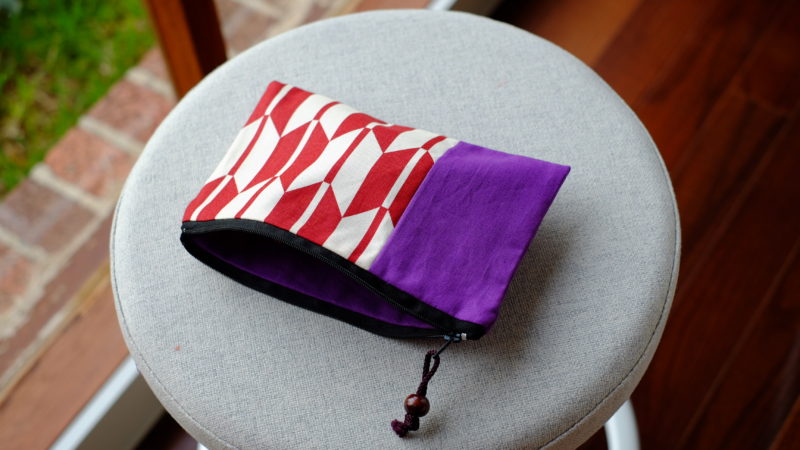
Meaning of this motif/この家紋の意味
Arrows are fletched with the tail feathers of eagle, hawk, crested ibis, and other large birds.
[Quote from] 日本の文様:Traditional Japanese Patterns and Motifs
矢羽根は矢の上部につける鷲(わし)、鷹(たか)、鴇(とき)などの尾羽のことで、矢羽ともいう。矢の意匠化は尚武を意味するが、かたちの面白さから文様に使われた。破魔矢(はまや)などの矢羽模様は、魔を祓うという意味から御殿女中の文様になった。
(12)Blue crescent waves(PURPLE)/青海波(せいがいは)紫色
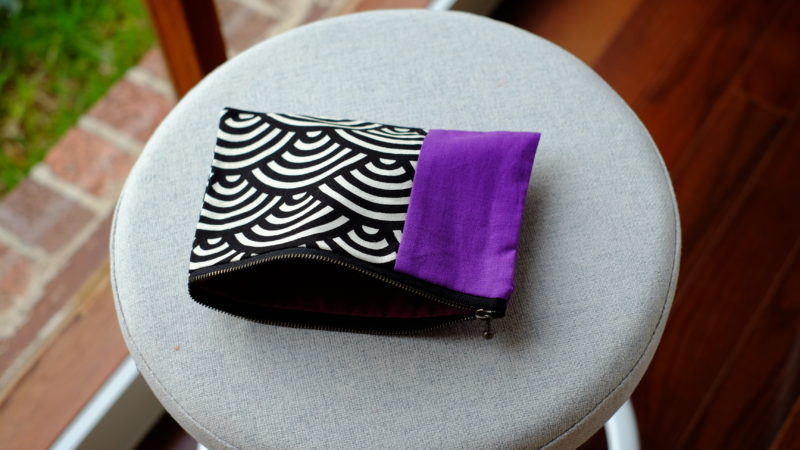
Meaning of this motif/この家紋の意味
The stylised wave pattern seigaiha, “blue ocean waves,” is formed of overlapping concentric circles or larger and smaller arcs. Its name comes from its use on the costume for a bugaku or court music piece of that title.
[Quote from] 日本の文様:Traditional Japanese Patterns and Motifs
同円あるいは大小の円弧を重ねて規則的に波型を表した文様である。舞楽「青海波」のときに用いる下襲(したがさね)にこの模様が付けられていたことから名づけられた。日本では海にまつわる伝説や民俗信仰が古くから伝えられ、大海原を表した青海波文は、海がもたらす幸を呼び寄せる文様とされ、吉祥文様として使われている。
(13)Carp(PURPLE)/鯉文(こいもん)
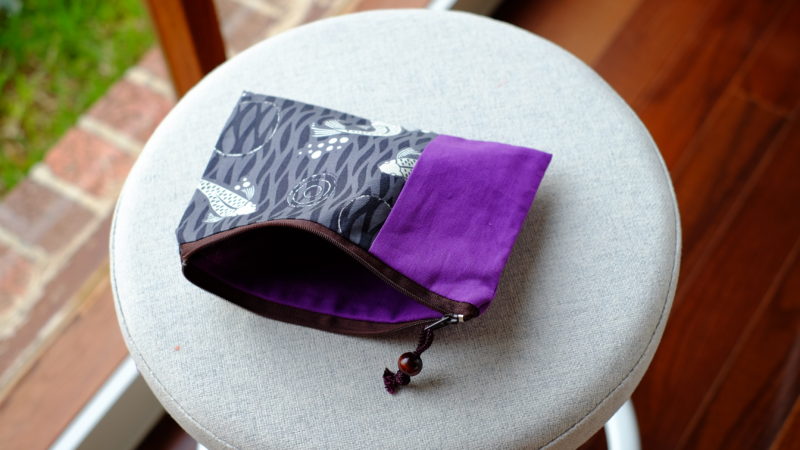
Meaning of this motif/この家紋の意味
The belief that a carp that scales the Dragon Gate repairs on the Yellow River will turn into a dragon has made this fish a symbol of upward mobility and worldly success.
[Quote from] 日本の文様:Traditional Japanese Patterns and Motifs
鯉は古くから川魚の長として、また黄河の急流にある龍門という瀧を登る鯉は龍になるという由来から、立身出世のシンボルとされた。
(14)Gold hemp(BLACK)/金色の麻の葉(黒色)
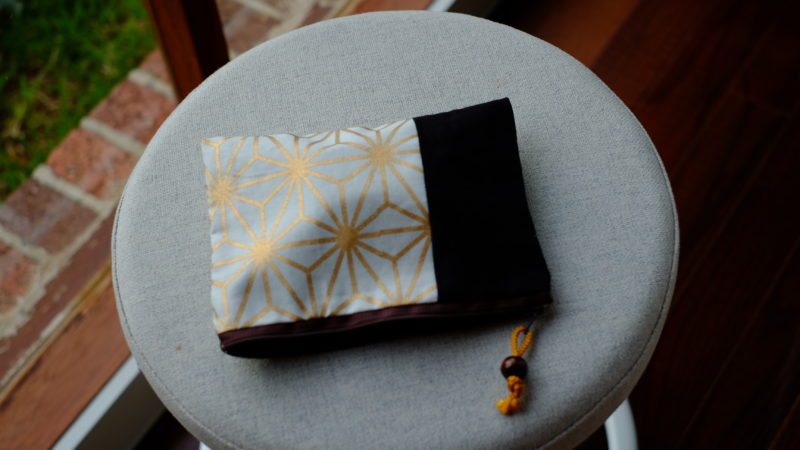
Meaning of this motif/この家紋の意味
A hexagonal pattern based on the hemp leaf, repeated as hexagonal stars. Composed of horizontal, vertical, and diagonal lines, the hemp leaf stars can be linked together in allover patterns.
[Quote from] 日本の文様:Traditional Japanese Patterns and Motifs
六角形を基本として、水平・垂直・斜線によって構成され、幾何学的に連続させた文様。そのかたちが麻の葉にのているところから、この名が生まれたと伝えられる。[…] また麻は真っ直ぐに伸びるところから、子供の産着や下着に用いられた。
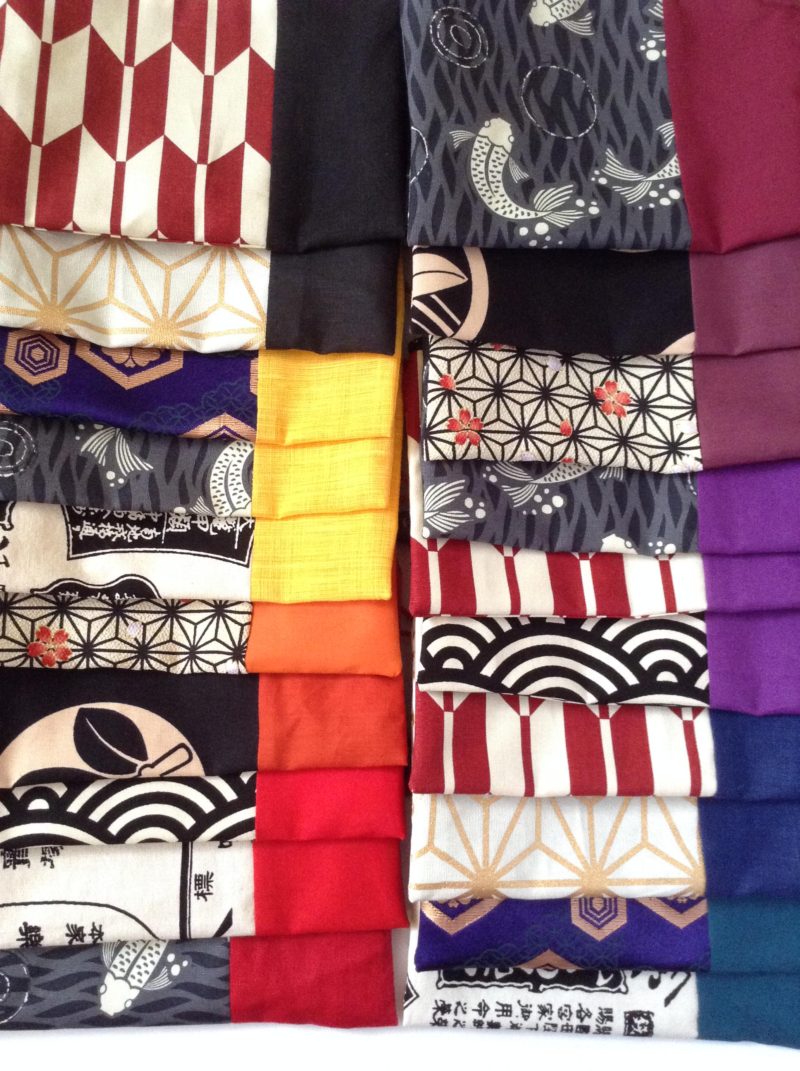
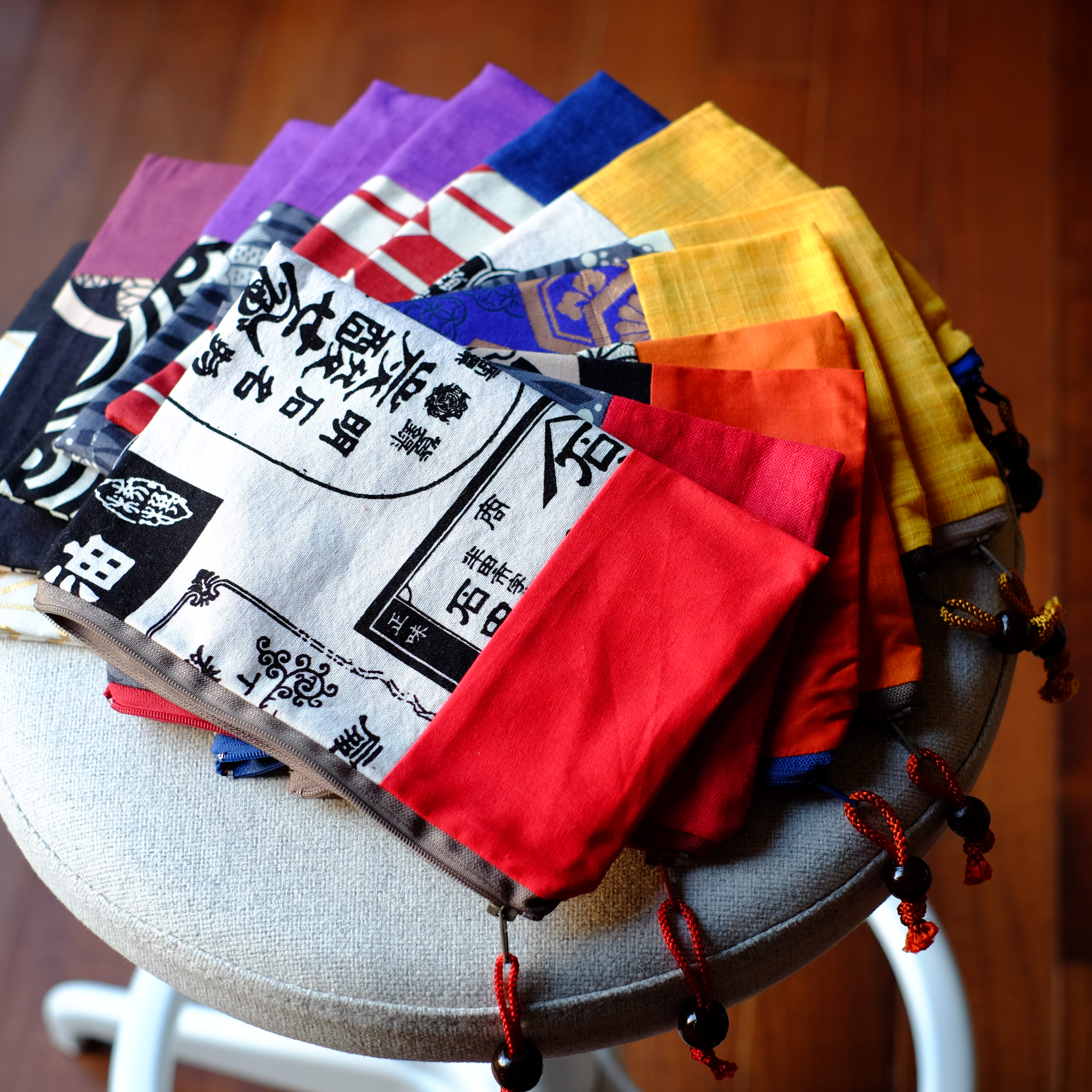
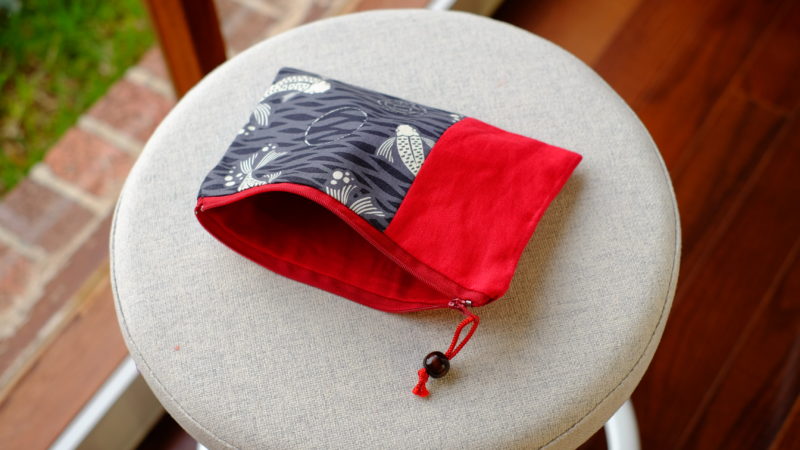
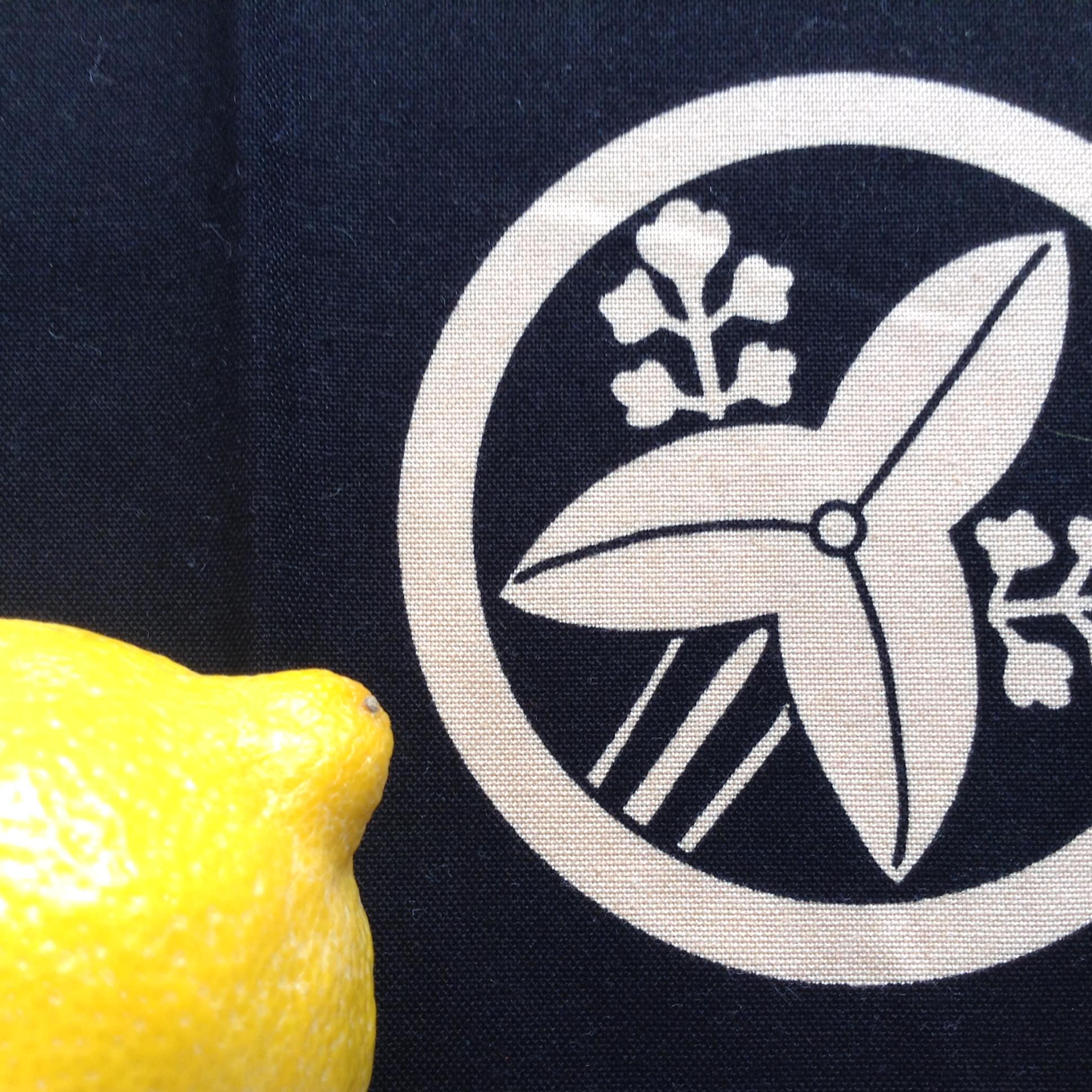
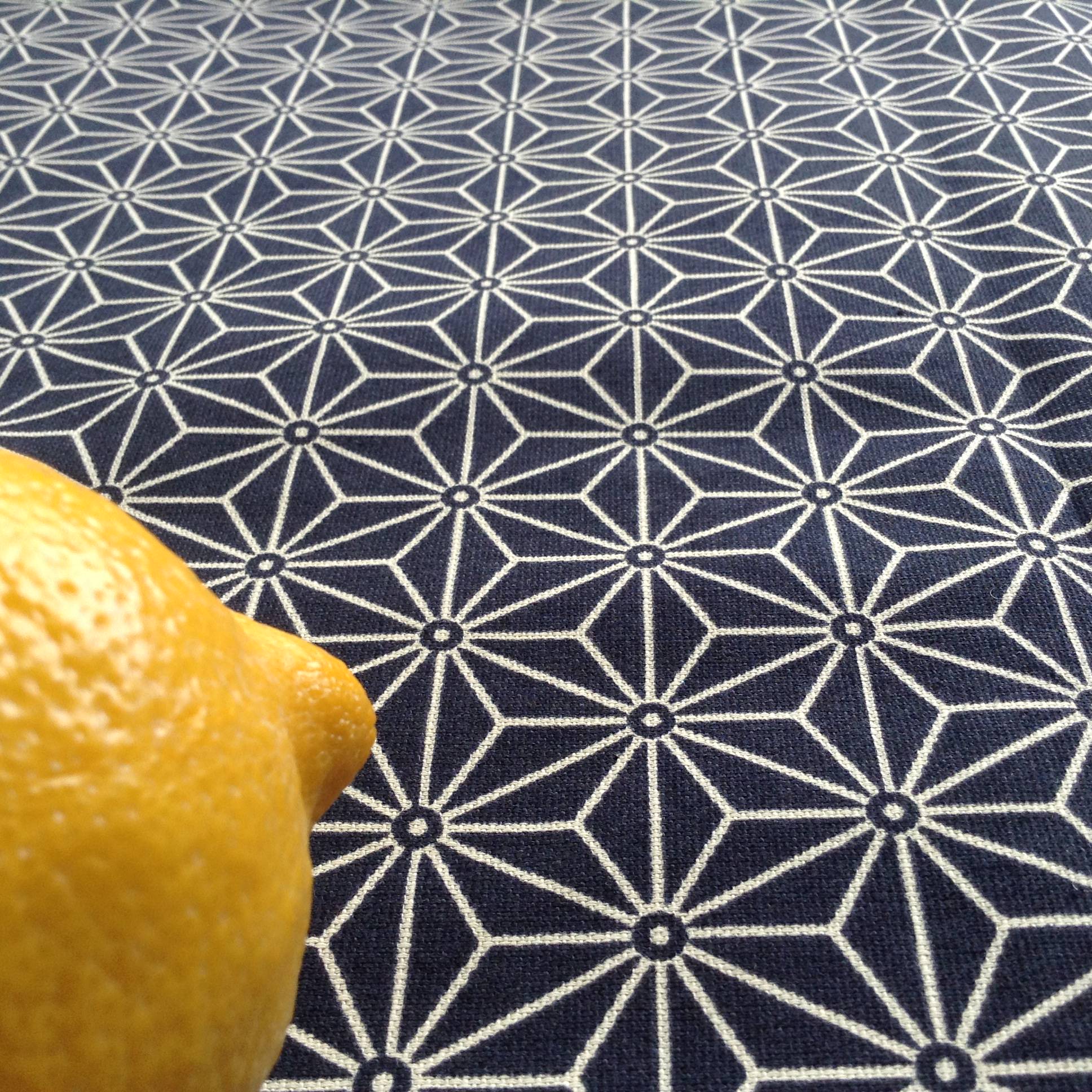
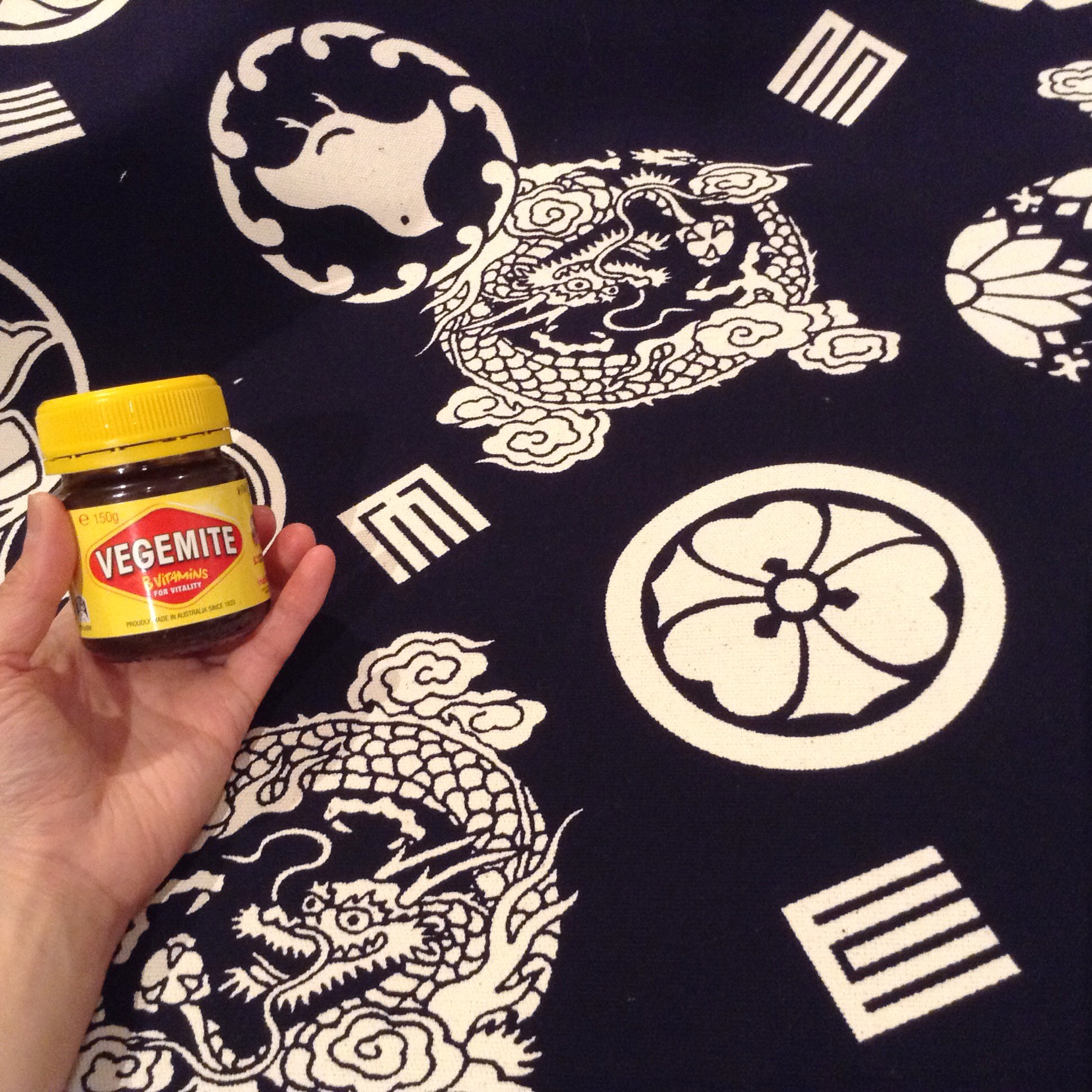
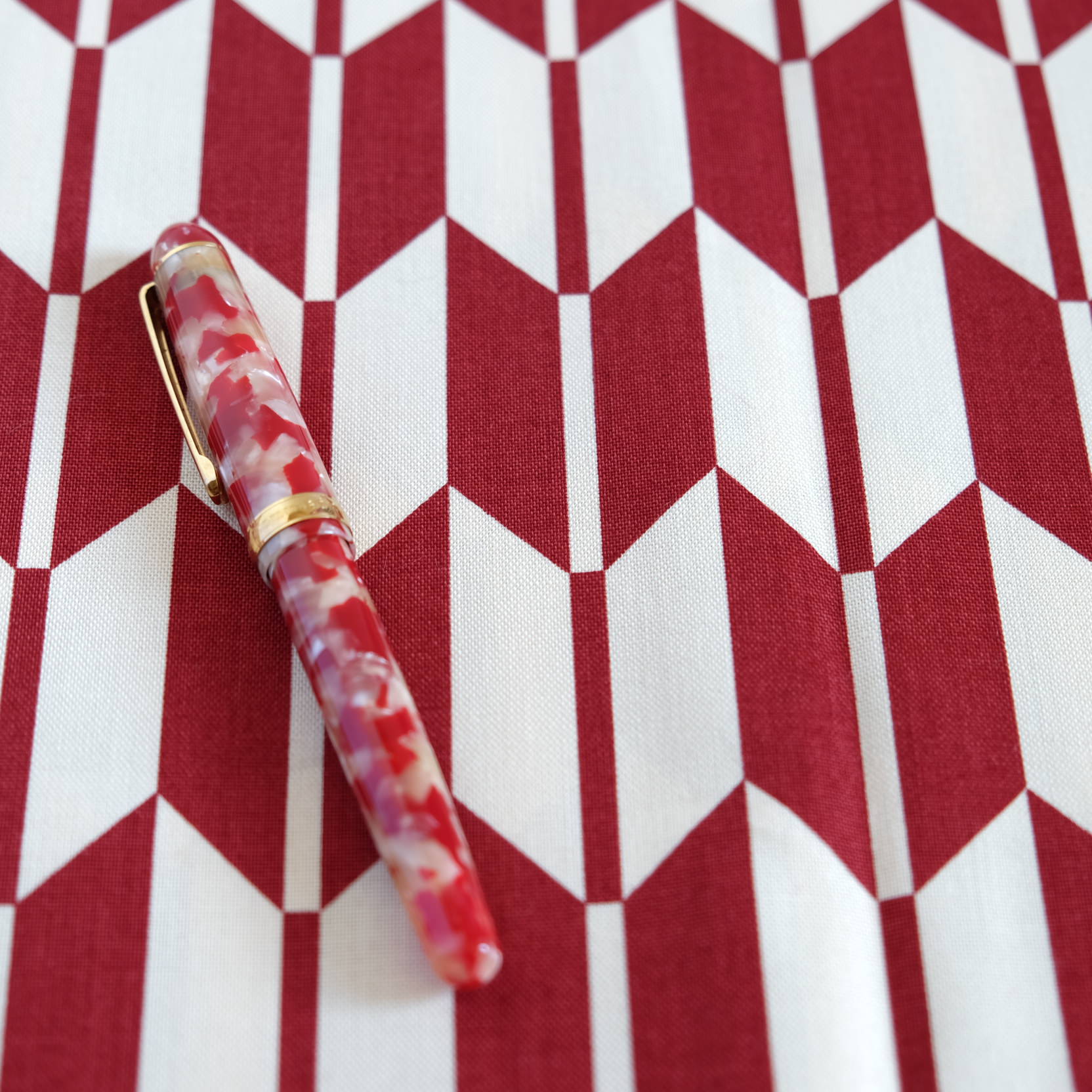
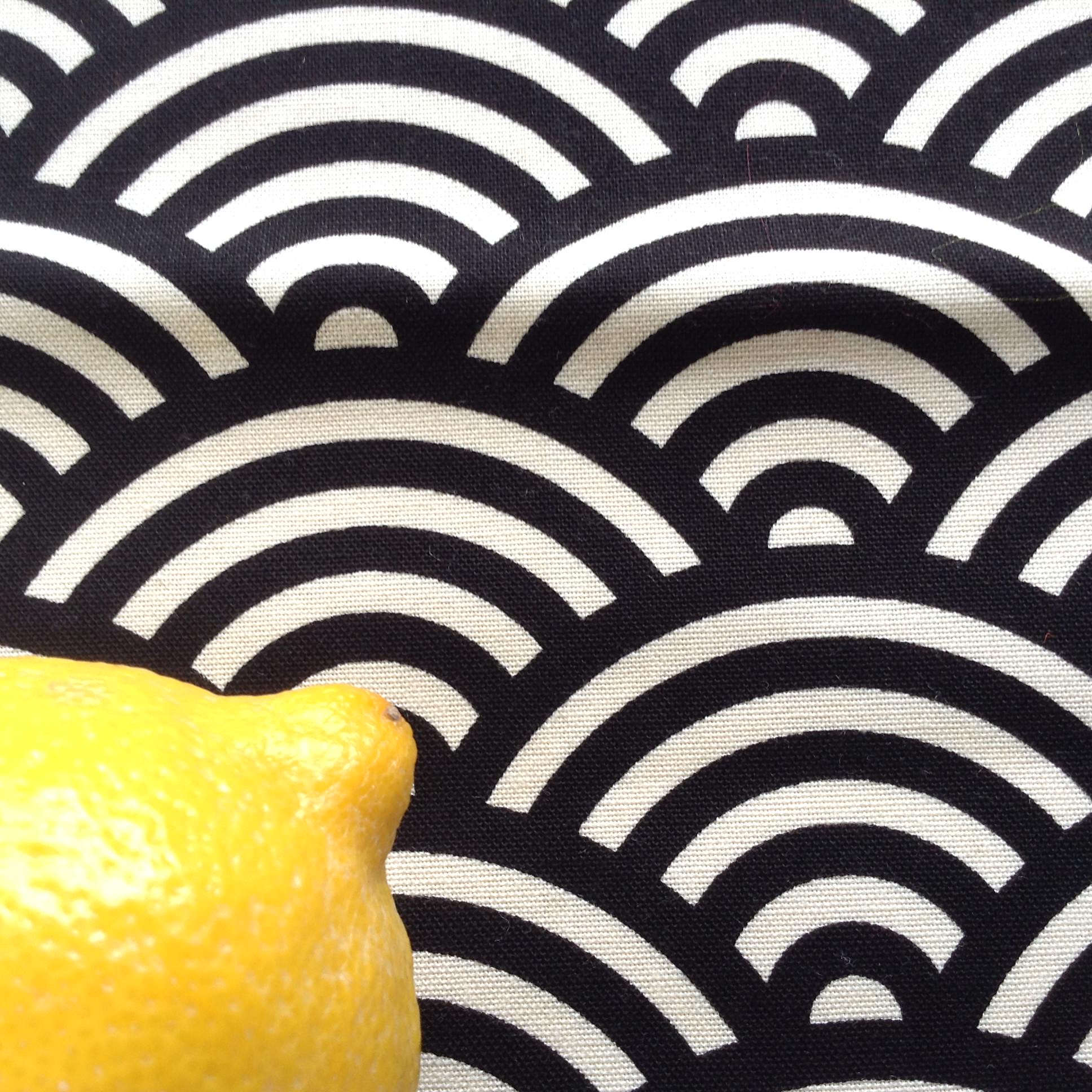



コメント Leave your feedbacks